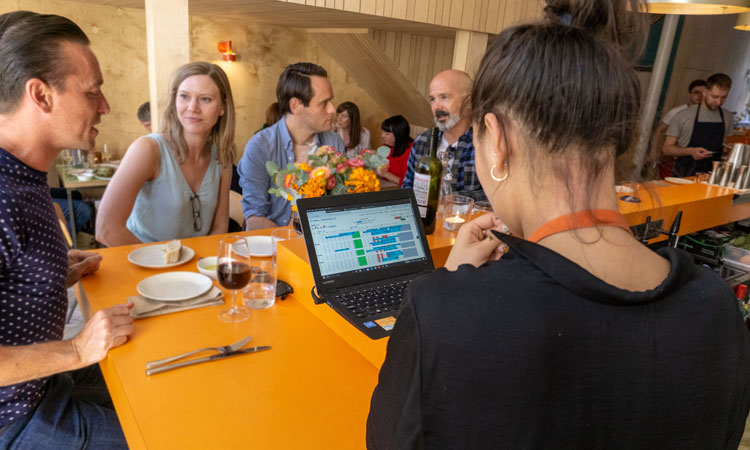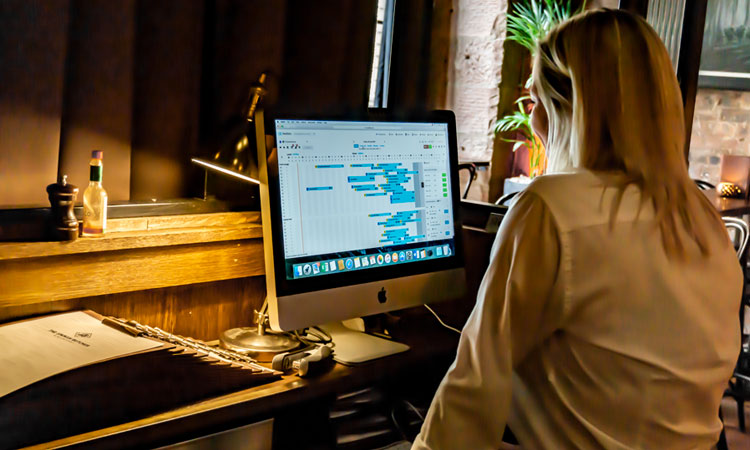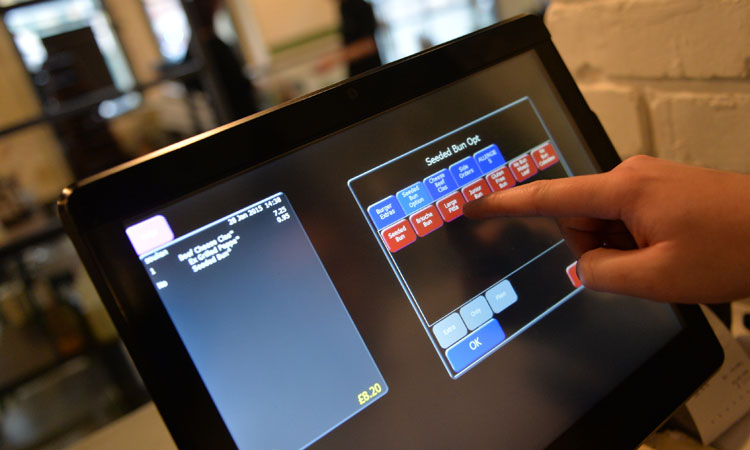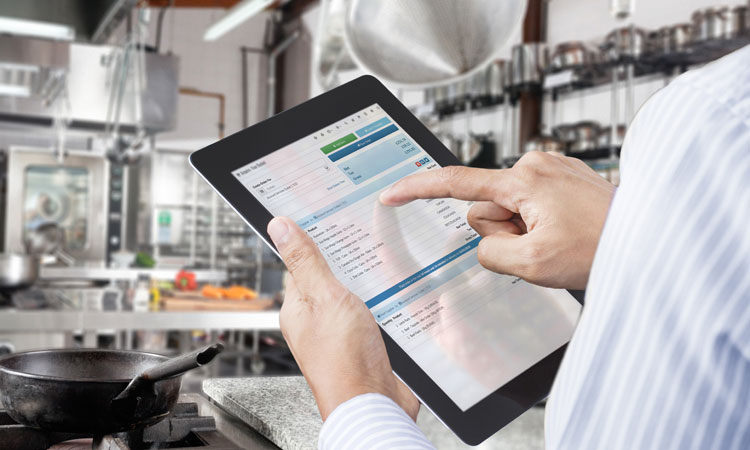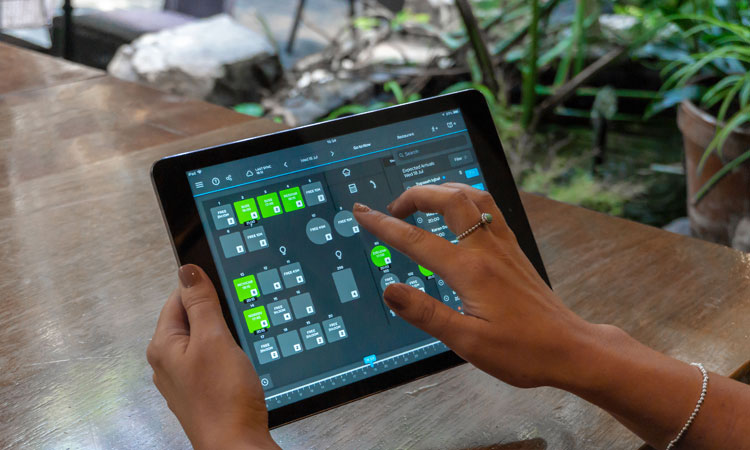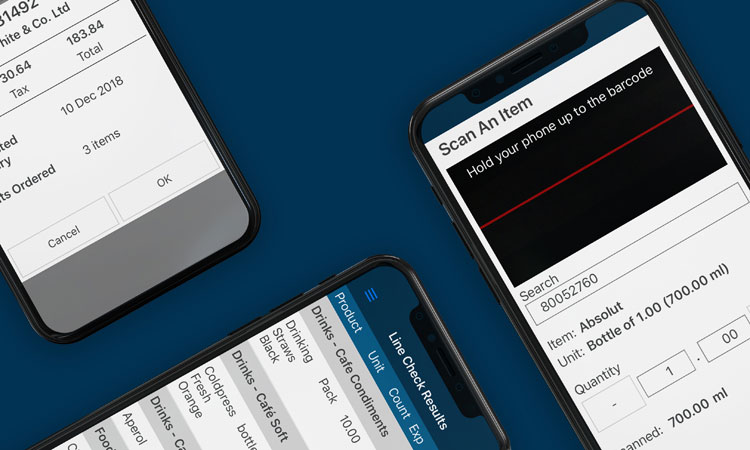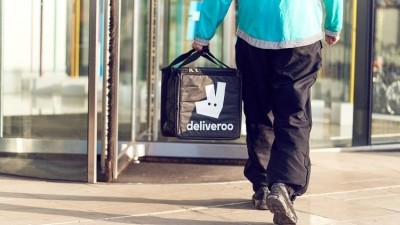Push the button

Embracing the latest restaurant technology has become increasingly crucial to business success, and especially so for those looking to scale up. But restaurant tech moves forward at such a pace, it can be hard to keep up with it all.
With this in mind, our annual technology report features insight from the people behind the companies that play a big role in driving the industry forward. Read on to find out what’s new and what’s on the horizon to help you run your business better.
EPoS systems
Fast-food operators like McDonald’s have embraced the self-service kiosk model of customer ordering, but this is a principle that’s set to be adopted increasingly by non-QSR restaurant venues, predicts EPoS provider Tevalis.
“There’s definitely room for self-service to evolve further to ensure other types of business in hospitality can reap the benefits too, but in a way that doesn’t have an effect on the operational style of the venue,” says Tevalis marketing manager Samantha Weller. “Digital eMenus are a great example of how this can be achieved and it’s a platform that we’ll definitely begin to see an emergence of within the next three years.
“The benefits a digital menu provides over a hard copy menu really are incomparable. Not only is menu management seamless, where new products and even new special menus can be added from the cloud, but head office can apply those updates and changes across the entire estate or selected sites at any time, from anywhere and in advance, which really is efficiency at its best.”
EPoS provider Oracle believes mobile ordering and payments through apps will continue to be a major growth area, so an EPoS system that can integrate with the third party services is critical.
“We’re seeing an increase in mobile technology like branded apps helping restaurants offer a convenient, on-demand guest experience, at the same time as helping to reduce labour costs,” says Oracle vice president Tim Brown.
“Meanwhile, guest-facing apps and partnerships with third-party delivery providers like Uber Eats and Deliveroo provide an easy ordering experience and fast payments, while promoting loyalty and driving repeat business.”
James Slatter, managing director at restaurant tech company Agilysys, also believes that mobile technology is transforming every aspect of restaurant operations and making processes slicker and easier for both the customer and the business user.
“Some of the most exciting developments in EPoS of late include the use of mobile wallets rather than cash or traditional credit card transactions; and tablet and smartphone-based guest ordering that uses geolocation-based technology to identify where to deliver the guest’s order,” he says.
“The prevalence of smartphones has empowered consumers to control their ordering experiences with the online accessibility of order placement and payments – which also increases revenue opportunities for those businesses.”
New generation ‘smart terminals’ that have the capability to do many other things apart from card processing are also contributing to this smoother customer experience, according to Regina Lau, chief strategy officer at payment solutions company Retail Merchant Services (RMS).
“Similar to smartphones, smart and portable PoS terminals can offer app functions packed into one touchscreen device, through the manufacturer’s own app market and with the option to integrate other software or build new applications for the terminals,” she says. Examples include offers displayed on the terminal screen and customer loyalty apps that drive repeat custom, she adds.
“Some of these functions are enabled through the terminal hardware features, like an inbuilt camera for barcode or QR code scanning, or a receipt printer. Smart PoS terminals can also be integrated with a PoS system to run the business more efficiently. For example, Epos Now has lots of data stored in it so that it can help with things such as inventory management, payroll and accounting.”
That said, the most important features for an EPoS system in 2019 and in the future have to be connectivity and security, according to Lau. “First, the device must function reliably through either Wi-Fi, GPRS (4G, 3G) and Bluetooth connections, so you may take payments inside at the bar via Wi-Fi, then go outside to take payment at a table, and even if Wi-Fi drops out, GPRS will connect automatically.
“Second, with customer data breaches becoming more frequent, the terminal should be fully EMV-approved and PCI 5.0-certified to offer the highest possible level of security and added peace of mind to businesses and customers alike.
“Smart terminals really are the new standard in card payments for improving customer experience, and they can open restaurants up to exciting, new commerce opportunities.”
Artificial intelligence (AI) is another thing set to be the next big technological shift in restaurant EPoS systems, driven by tech advances by Amazon and Google, as Paul Berryman of pointOne explains.
“AI, automation and robotics are here and it won’t be long before it becomes the natural computer language to run our EPoS platforms for higher levels of intelligent data reporting. Large-scale operators such as McDonald’s are already investing heavily in artificial intelligence because of its future potential.
“The rise of self-serve kiosks and CRM are where this AI capability can really drive both customer experience and operational efficiency. For example, the consumer increasingly uses voice in the form of Amazon’s Alexa, Google Home and online search – and very soon voice ordering will no doubt be seen in self-serve kiosks in-store.”
Tevalis has already introduced ordering via Alexa for Hospitality at Village Hotels, which the company sees as just the start of a whole new phenomenon that has the potential to shake up hospitality tech.
“We’ve deployed voice-activated ordering through Alexa for Hospitality into Village Hotels across a selection of their rooms and Alexa seamlessly integrates with the Tevalis PoS and provides FoH with increased efficiency and accuracy,” says Weller.
“It’s also a great piece of technology for customers as it provides them with an immersive, memorable experience.”
Bookings
While voice activated technology is predicted to transform the way consumers order their food and drink, it’s also expected to be used increasingly to book venues too.
Pierpaolo Zollo, VP business development at restaurant bookings provider Quandoo, says: “At Quandoo, we believe that 50% of all searches will be voice searches by 2020 – the voice revolution is officially upon us and this will include booking a table and even ordering food.
“We were the first restaurant booking platform to develop an AI-driven chatbot, allowing the entire process of making a restaurant booking possible through ‘chatting’ with an AI on Facebook Messenger, and are currently working on further technology to continue to connect the restaurant industry with artificial intelligence through voice.”
ResDiary is also now offering restaurant bookings through Facebook Messenger, as co-CEO Colin Winning explains.
“ResDiary has just integrated with Feebi, a Facebook chatbot that automatically answers questions and takes bookings through Messenger,” he says. “It’s something our users are excited about as, in a time of mounting costs, it takes some time pressures away from staff, allowing them to spend time with the people who are actually in their venue.”
Certainly, booking restaurants through social media channels is increasingly becoming the new norm, which has prompted Quandoo and rival bookings provider OpenTable to join forces and combine some of their restaurant inventories.
The partnership will bring Quandoo’s offering to 23,000 restaurants worldwide, while OpenTable’s restaurant partners will increase to 56,000 restaurants. OpenTable VP Adrian Valeriano says that while there are numerous ways to book restaurants now, including through Google and Instagram, booking sites such as OpenTable still offer a better user experience.
“Information is out there everywhere, whether it’s Google or Apple, but our verified reviews, images and menus make that experience unique,” he says.
At the same time, OpenTable recognises the appeal for diners of booking a table via Instagram, so has integrated with the social networking service to allow customers to book within the app.
“We are seeing the way diners make their decisions about where to eat changing, with peer-to-peer recommendations becoming more and more important, and photography having a greater impact on how diners discover where to dine,” explains Valeriano.
“OpenTable’s Instagram integration helps restaurants be where diners are making their decisions and enables them to make a reservation for that restaurant direct from their
Instagram profile.”
ResDiary’s integration with Reserve with Google has also proven successful for its restaurant clients. “Consumers are increasingly demanding connectivity. Making bookings from their favourite sites and platforms is becoming more important. When we launched a partnership with Google on their Reserve with Google platform, we processed 83,000 bookings within the first month,” says Winning.
ResDiary has also started investigating the benefits of machine learning, particularly in relation to reducing no-shows.
“In early trials, our tech predicted with a 77% degree of accuracy whether reservations would turn up, based on factors like length of time before the booking and the reservation date, the party size, the predicted weather and more,” adds Winning. “As this technology is implemented into every diary and increased data improves the machine learning capabilities, the possibilities for helping venues are endless.”
Staying on the sticky subject of no-shows, using a sophisticated bookings system is certainly one tool in the battle against this age-old problem, as Zonal marketing technologies commercial director David Charlton explains.
“Although no-shows are something that operators live with, they can be managed thanks to technology,” he says. “Having an integrated online booking system, such as Zonal’s liveRES, allows operators to send automated reminders to guests prior to them visiting the restaurant.”
With liveRes, cancellations are fed into the diary and the table is released immediately on the website and other integrated booking channels. This allows it to be easily reserved again, helping restaurants limit the damage that no-shows can bring.
“With technology comes data and armed with reliable past data a good manager should be able to predict no-shows and over-adjust capacity slightly, to improve the odds of getting a full house.”
Front-of-house technology
Mobile devices for ordering and payments have brought the biggest transformation to front-of-house operations and this is only set to grow further.
“The rise of the food-to-go market has meant that QSR and casual dining operators are often juggling a growing delivery and in-house business,” says pointOne’s Berryman.
“They need their EPoS systems to provide a quick and sleek front of house service, utilising tableside and online ordering, but still include all the back of house functionality. This often means they need a multi-use mobile PoS like the swing tablet that hosts your complete EPoS system and can either be docked and locked in position on the countertop, or detached in roaming mode to become a portable ordering device. While in this mode it can still control ticket and kitchen printers, cash drawers, payment terminals, scanners and communicate with kitchen screens.”
Minimising wait times is vital for a good customer experience, so utilising a table management solution like that provided by QSR Automations is likely to increasingly become standard practice.
“Front-of-house technology is just as important to operational excellence as back of house and operators should be exploring table management platforms, such as QSR Automations’ DineTime solutions,” says QSR’s Ashley Sheppard. “Not only do these manage all guest activity as soon as they arrive in the restaurant, they are also integrated to partner platforms like OpenTable, Google and Yelp. This gives the operators the best of both worlds, a solution designed specifically to manage in-store operations while at the same time sharing reservation and waitlist capacity with the world.”
Meanwhile, pay-at-table specialist LOKE predicts that front-of-house technology will be used more and more by restaurants as a way of cutting labour costs.
“It’s no secret that labour costs have long been the most expensive component of the hospitality industry and this is now coupled with uncertainty around potential staff shortages caused by Brexit,” says CEO Matthew Khoury. “Technology is going to be crucial to streamlining operations as restaurants weather the Brexit storm.
“What we’ll see is more and more operators turning tech to their advantage – for example removing team members from the bar or table service to be replaced with order screens, and putting the power of payments directly into the hands of customers through their phones.”
Back-of-house technology
Kitchen management systems have come a long way in recent years but the biggest focus for development in 2019 has been in the provision of allergen information.
“The introduction of Natasha’s Law will require all food businesses to clearly label the full ingredients of pre-packaged food and is likely to herald additional legislation for restaurants and takeaways which are already required to provide information on 14 everyday allergens,” says Robert Clarke, EPoS business development director of Access Hospitality.
Rather than waiting and worrying about allergens any longer, Access has developed an omni-channel process which provides a seamless experience for the customer.
“Access Procure Wizard is a purchase-to-pay solution which mandates suppliers to keep vital ingredient and allergen information up-to-date and is now fully integrated with workflows all the way down to Access EPoS system. This pulls all the relevant data through to tills, tablets, kiosks and integrated ordering apps so that live and accurate information is always available.”
PointOne has also enhanced its kitchen management solution to aid restaurants in addressing customers’ dietary needs.
“Now more than ever, managing dietary needs is a critical part of restaurant management. Our Kitchen Management solution provides a safety net for these issues by highlighting and controlling dishes that are served with special requirements such as allergens or gluten-free. This reduces the stress on staff as they know exactly what is going out at any time,” says pointOne’s Berryman.
Erudus is an online platform specifically launched to provide the foodservice industry with instant access to food product data. Whether viewing on the Erudus platform or via an online ordering app, restaurant staff can see accurate data on more than 60,000 food products that has been uploaded directly by manufacturers.
“There are estimated to be two million people in the UK with a food allergy and this number continues to increase. In addition, there have recently been high-profile cases of food allergy-related deaths and the Government is already making moves to tighten up food safety,” says Jon Shayler, chief operating officer at Erudus.
“Viewing accurate data in order to advise consumers correctly is vital, and technology provides instant access at the touch of a button.”
Back-of-house tech isn’t just about making sure a restaurant kitchen runs like a well-oiled machine – these days it can also help out chefs who are a bit stuck for menu ideas too.
Launched into the UK last year, Gastronomixs is a website and app designed to help chefs create more interesting dishes. “Chefs constantly need to develop new dishes and it’s not surprising they’re out of inspiration every now and then, and that they don’t have time to experiment in the kitchen as much as they would like,” says co-founder Inge Meijs. “Gastronomixs offers thousands of tried-and-tested components – or recipes – chefs can use to create an endless amount of dishes. It saves time, trial-and-error costs and is a brainstorm partner that’s there for you 24/7.”
Delivery
Latest figures from The NPD Group show that delivery orders grew 20 times faster than for the overall foodservice industry in the two years leading up to February 2018 – and this trend shows no sign of slowing down.
More and more delivery orders are shifting from over the phone to online and in-app, ordering food is simpler and faster for consumers than ever before.
“In what, for many restaurant operators, is an otherwise challenging environment, delivery offers a huge opportunity to access a broader customer base and increase order volumes,” says Andrew Kenny, UK managing director at Just Eat.
Jerome Laredo, VP of EMEA at Lightspeed, warns that while adding a delivery arm to a business can be hugely successful, choosing the right technology solution is vital.
“Offering delivery opens up an extra revenue stream and expands a brand’s impact beyond your physical locations,” he says.
“Of course, the delivery has to be good – a bad delivery experience can tank any goodwill a business might have built up with that customer. Research firm McKinsey found that 60% of consumers consider short wait times a critical factor in a good delivery experience: a business has about an hour to get them hot, fresh food and make a good impression.
“The right EPoS system will be a powerful tool to aid you in nailing delivery. It should integrate into popular delivery service sites and give an easy way to track your incoming orders.”
Philipp Laqué, managing director of Revenue Management Solutions (RMS), points to the US where Olo, a US-based delivery specialist, has come up with a solution to the common issue of multiple tablets sitting on restaurant counters receiving orders from various third-party delivery channels.
“A team member has to manually enter orders from different tablets into the EPoS to ensure every order is captured and accounted for. So Olo introduced ‘Rails’, a platform which removed this resource-heavy process for teams by streamlining all third-party orders with a two-way synchronisation between third-party sites and the restaurant to process all orders into one format – no more tablet hell! Might something similar hit the UK soon?” he asks.
In-restaurant communications
With restaurant staff typically separated by roles, shifts, and locations, one of the main challenges for restaurant managers is communicating effectively with their teams. But these days there is a technological solution and the bonus is it’s helping staff retention rates.
Beekeeper is an internal communications app that gives workers access to the operational tools they need, including direct messaging, shift schedules, and important documents such as health and safety guidelines – all on their mobile device. “We’ve found that transparent internal communications and greater employee autonomy leads to stronger team morale, which contributes to higher retention rates,” says Beekeeper CEO Cristian Grossmann.
“Our technology also improves the guest experience because staff are better informed and prepared during their shift.”
Pager systems are also an effective way of improving communication between restaurant staff and are likely to grow in popularity.
“It’s no secret that improving front and back-of-house interaction is crucial to providing uninterrupted service,” says Eloise Sheppard, managing director of pager provider Call Systems Technology. “Waiter paging lets the chef alert the front-of-house team as soon as an order is ready. This creates a more relaxing environment and cuts down the number of journeys between the floor and kitchen pass to check on current status. Waiting staff are then free to check back at tables, upsell drinks and respond to service requests, improving the all-important customer experience.”
Analytics and feedback
Analysing your business’s performance – in every area – has been simplified by the development of tech such as Fourth’s Analytics platform. The platform integrates with more than 20 different companies, whose data is aggregated into easily digestible information on the Fourth Analytics dashboard.
“A great example of this is our integration with Prestige Purchasing and CGA’s Foodservice Price Tracker. We have integrated the data from the tracker into our customers’ procurement dashboards, so they can see whether they are paying the industry rate for specific products, or paying over the odds,” Mike Shipley, analytics and insight solutions director at Fourth.
“This is incredibly powerful information and the platform also allows operators to view the potential savings they could make if they switched to the average industry price, allowing them to quickly and efficiently cut out cost.”
Analysing customer feedback is another crucial task for restaurant operators, especially with consumers continually posting comments and reviews on social media.
Thankfully, online reputation management platforms such as Reputation.com and Feed It Back can be highly effective in making sure you know what your customers are saying about your restaurant.
“The influence of a good reputation, from positive reviews to community management on social media, is definitely part of a restaurant’s priorities and many are already seeing the benefits of this form of marketing,” says Anthony Gaskell, managing director, EMEA, at Reputation.com.
“The right software drastically reduces the level of man hours you need to properly manage your online reputation, regardless of the size of your business.”
“Feed It Back tracks all outlets for customer feedback, including Facebook and TripAdvisor, and aggregates everything into one easy-to-use platform that allows operators to efficiently deal with feedback they otherwise wouldn’t have heard, reward employees for excellent service, and turn negative experiences into positives,” says co-founder Carlo Platia.
“Thanks to technological advances, operators can now gather immediate insight into the minute details of the customer experience across their estate, to inform and guide their business decisions.”
This is a web version of an article that first appeared in the September issue of Restaurant magazine, the leading title for the UK's restaurant industry. For more features, comment, interviews and in-depth analysis of the restaurant sector subscribe to Restaurant magazine here.
